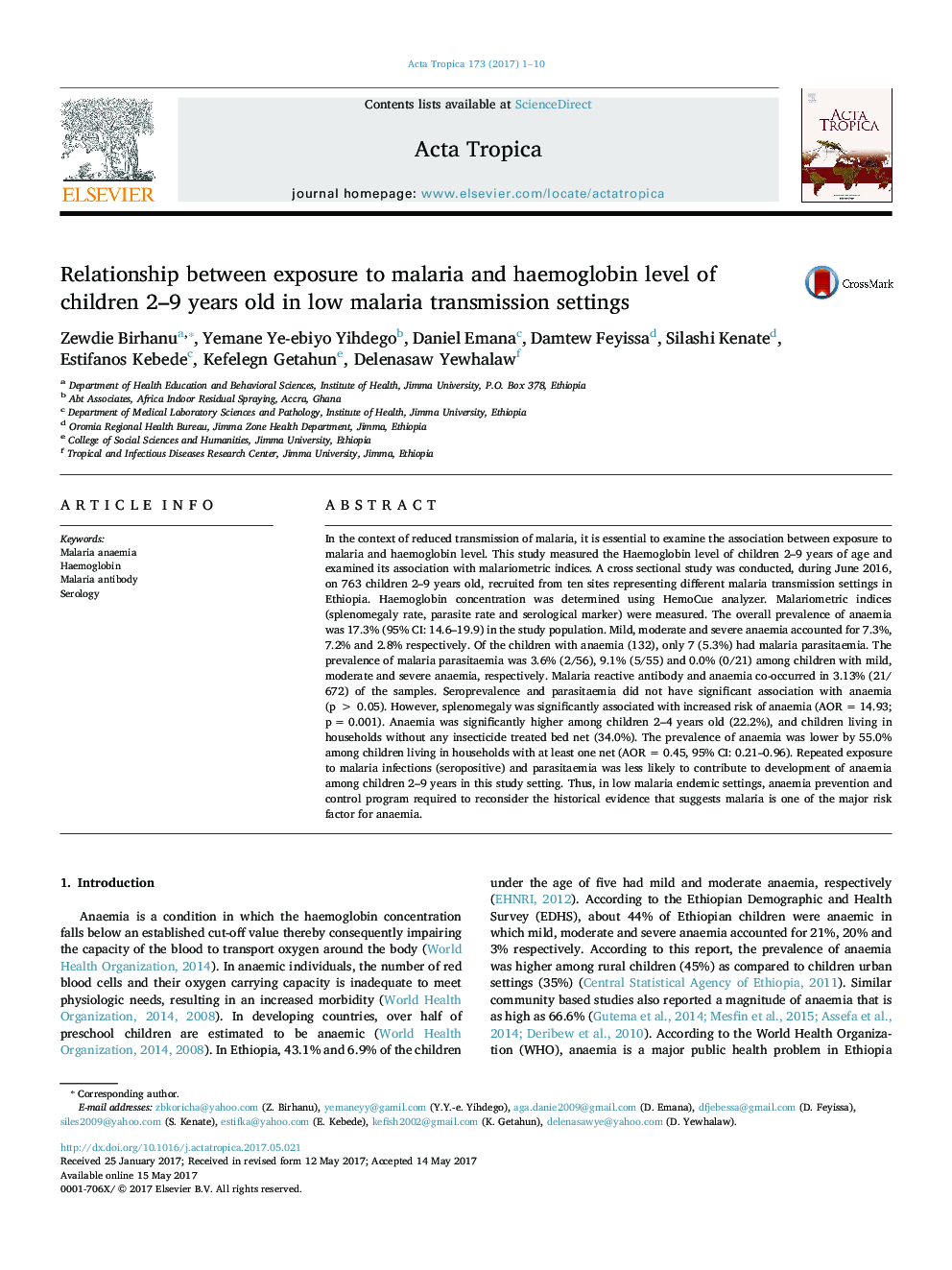| کد مقاله | کد نشریه | سال انتشار | مقاله انگلیسی | نسخه تمام متن |
|---|---|---|---|---|
| 5671073 | 1592751 | 2017 | 10 صفحه PDF | دانلود رایگان |
In the context of reduced transmission of malaria, it is essential to examine the association between exposure to malaria and haemoglobin level. This study measured the Haemoglobin level of children 2-9 years of age and examined its association with malariometric indices. A cross sectional study was conducted, during June 2016, on 763 children 2-9 years old, recruited from ten sites representing different malaria transmission settings in Ethiopia. Haemoglobin concentration was determined using HemoCue analyzer. Malariometric indices (splenomegaly rate, parasite rate and serological marker) were measured. The overall prevalence of anaemia was 17.3% (95% CI: 14.6-19.9) in the study population. Mild, moderate and severe anaemia accounted for 7.3%, 7.2% and 2.8% respectively. Of the children with anaemia (132), only 7 (5.3%) had malaria parasitaemia. The prevalence of malaria parasitaemia was 3.6% (2/56), 9.1% (5/55) and 0.0% (0/21) among children with mild, moderate and severe anaemia, respectively. Malaria reactive antibody and anaemia co-occurred in 3.13% (21/672) of the samples. Seroprevalence and parasitaemia did not have significant association with anaemia (p > 0.05). However, splenomegaly was significantly associated with increased risk of anaemia (AOR = 14.93; p = 0.001). Anaemia was significantly higher among children 2-4 years old (22.2%), and children living in households without any insecticide treated bed net (34.0%). The prevalence of anaemia was lower by 55.0% among children living in households with at least one net (AOR = 0.45, 95% CI: 0.21-0.96). Repeated exposure to malaria infections (seropositive) and parasitaemia was less likely to contribute to development of anaemia among children 2-9 years in this study setting. Thus, in low malaria endemic settings, anaemia prevention and control program required to reconsider the historical evidence that suggests malaria is one of the major risk factor for anaemia.
Journal: Acta Tropica - Volume 173, September 2017, Pages 1-10
